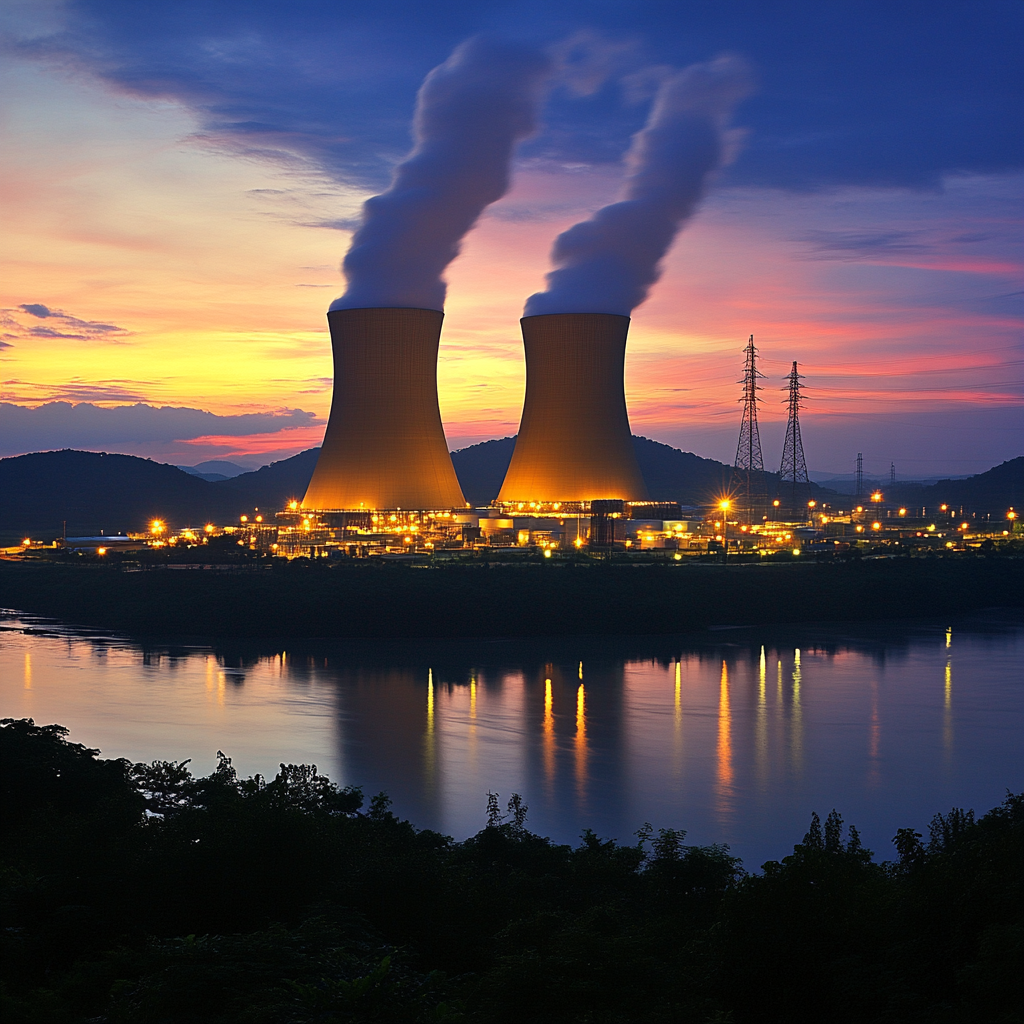
-
Rising Nuclear Interest in Southeast Asia – Countries like the Philippines, Indonesia, Vietnam, and Malaysia are exploring nuclear energy to meet growing electricity demand and reduce reliance on fossil fuels, despite historical setbacks and safety concerns.
-
Financial and Regulatory Hurdles – High costs, long construction timelines, and limited international financing remain major challenges, with small modular reactors (SMRs) offering a potential but unproven alternative for lower-cost nuclear deployment.
-
Workforce and Geopolitical Challenges – Developing a skilled nuclear workforce and securing uranium supply chains are critical obstacles, as public skepticism following past nuclear disasters continues to influence policy decisions.
Southeast Asia is turning its attention to nuclear energy as a potential solution for its growing energy demands and the need for cleaner power sources. The region, which is expected to account for a quarter of global energy demand growth by 2035, has long relied on fossil fuels, contributing to both environmental concerns and energy security challenges. While nuclear power has been a dominant energy source in wealthier nations such as the United States, France, and Japan, it has yet to take root in Southeast Asia. Now, as technological advancements make reactors safer, smaller, and more affordable, several countries in the region are reconsidering nuclear power as a viable option.
One of the most notable cases is the Philippines, where the Bataan Nuclear Power Plant was built in the 1970s but never put into operation due to safety concerns and allegations of corruption. Decades later, there is renewed interest in reviving the facility, with a Korean company currently assessing its feasibility. The Philippines is not alone in its nuclear aspirations. Indonesia has ambitious plans to construct 20 nuclear power plants, while Vietnam has revived its nuclear energy strategy after previously shelving a project in 2016 due to soaring costs. Malaysia, Thailand, Laos, Cambodia, and Myanmar have also expressed interest, and Singapore recently signed a nuclear cooperation agreement with the United States. Despite this momentum, nuclear energy development in the region faces significant obstacles, including high costs, long construction timelines, and the challenge of developing a skilled workforce.
Historically, the high price tag of nuclear power projects has been a major barrier. Vietnam’s earlier attempt at a nuclear plant was halted when projected costs ballooned to $18 billion, highlighting the financial risks involved. However, international financing for nuclear energy is becoming more accessible. Fourteen major financial institutions recently endorsed a goal to triple global nuclear energy capacity by 2050, and the World Bank has acknowledged the growing interest in nuclear power as part of energy decarbonization efforts. Yet, the World Bank itself does not currently fund nuclear projects, and many governments in the region lack well-defined policies and regulatory frameworks, which are crucial for attracting investment and ensuring the safe development of nuclear power programs.
Advancements in technology, particularly small modular reactors (SMRs), are making nuclear power more attractive. These reactors, which generate about one-third the power of a traditional nuclear plant, are designed to be safer, quicker to build, and more adaptable to different locations. Their proponents argue that they require less initial investment and incorporate safety features that provide more time for intervention in case of emergencies. However, critics question the actual cost-effectiveness of SMRs, given that they have not yet been widely deployed on a commercial scale. A recent U.S. SMR project was canceled after costs increased significantly, from an estimated $55 per megawatt-hour to $89 per megawatt-hour. Additionally, most existing SMRs are operated by state-owned enterprises that lack transparency, making it difficult to assess their true financial and operational performance.
Public perception and safety concerns remain another challenge for nuclear energy expansion in Southeast Asia. The 1986 Chernobyl disaster played a role in the Philippines’ decision to keep the Bataan plant offline, and the 2011 Fukushima disaster in Japan led Thailand to halt its own nuclear plans. Governments must address these concerns and establish clear policies for managing nuclear waste, as well as ensuring that uranium supply chains are secure. Currently, Russia dominates approximately 40% of the global enriched uranium market, creating geopolitical risks for countries that seek to develop nuclear programs.
Beyond financing and public trust, human capital is another major factor. Nuclear energy programs require a highly specialized workforce, and many countries in Southeast Asia lack the necessary engineers and technicians to support their ambitions. Vietnam alone estimates that it will need at least 2,400 trained personnel to relaunch its nuclear energy program, underscoring the need for long-term investments in education and workforce development.
As nuclear energy gains renewed attention, Southeast Asia faces both opportunities and challenges. If countries in the region can overcome financial hurdles, regulatory gaps, and public skepticism, nuclear power could play a key role in providing reliable and low-carbon electricity. The coming years will determine whether these ambitions translate into reality or remain constrained by the same barriers that have kept nuclear power on the sidelines for decades.

0 Comments